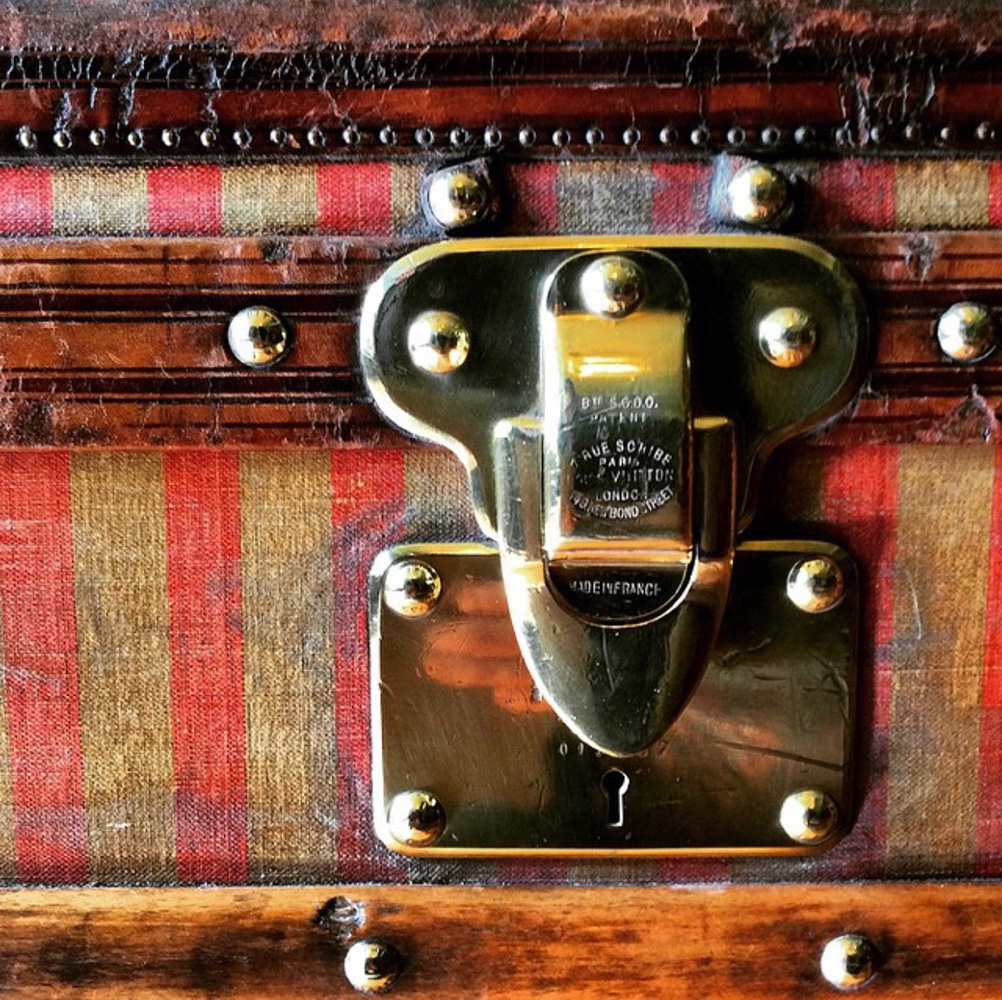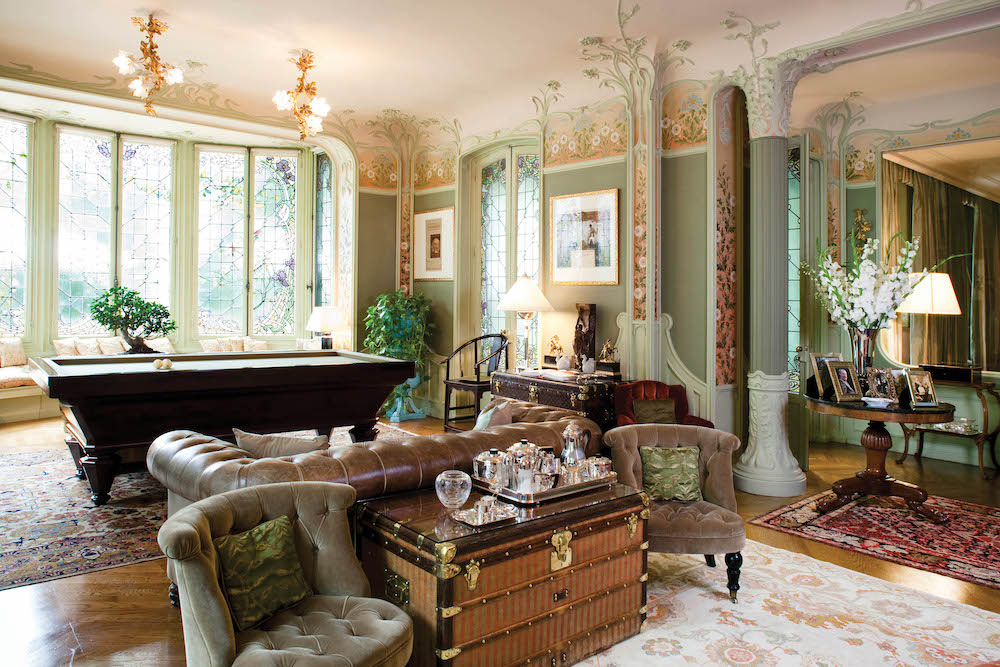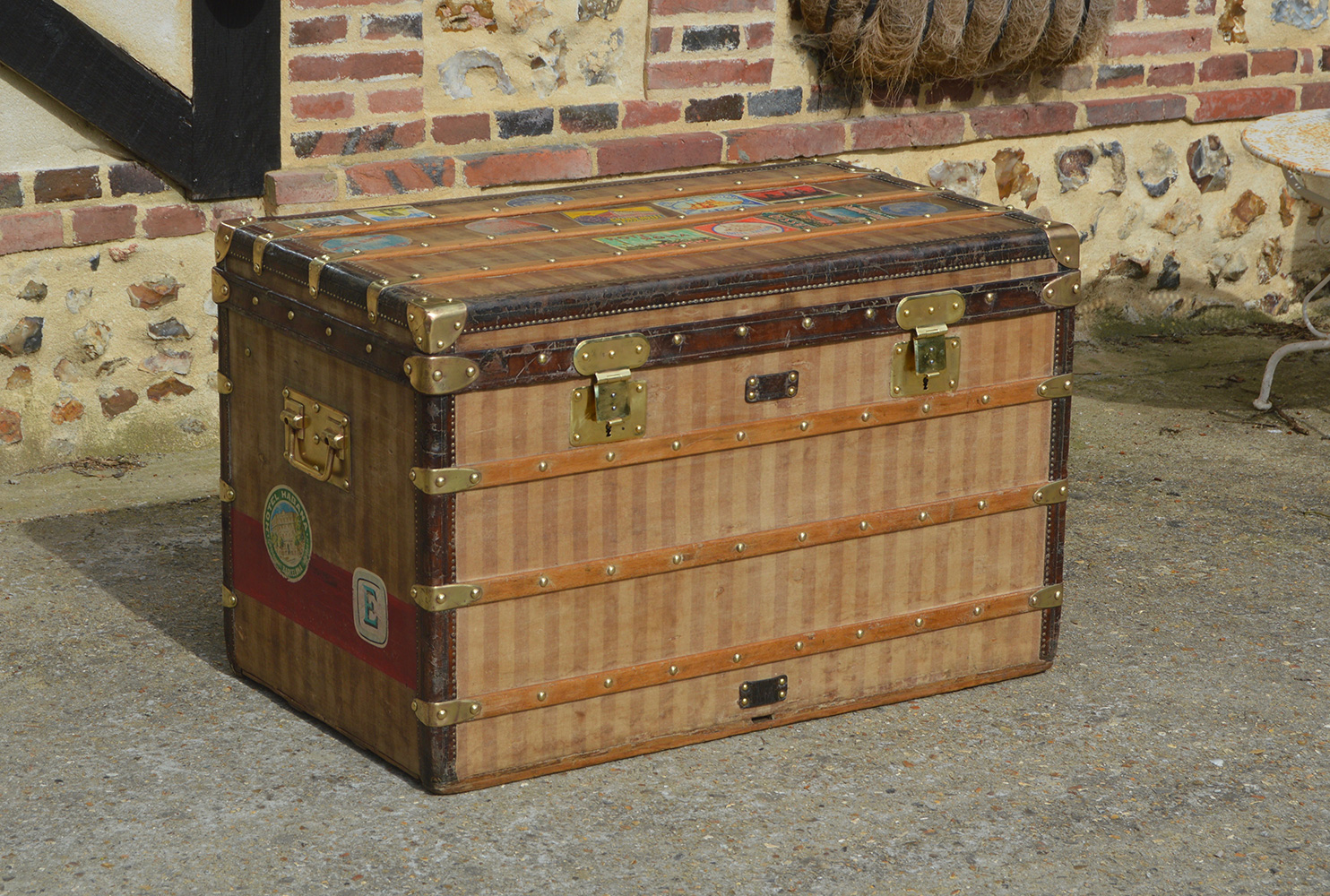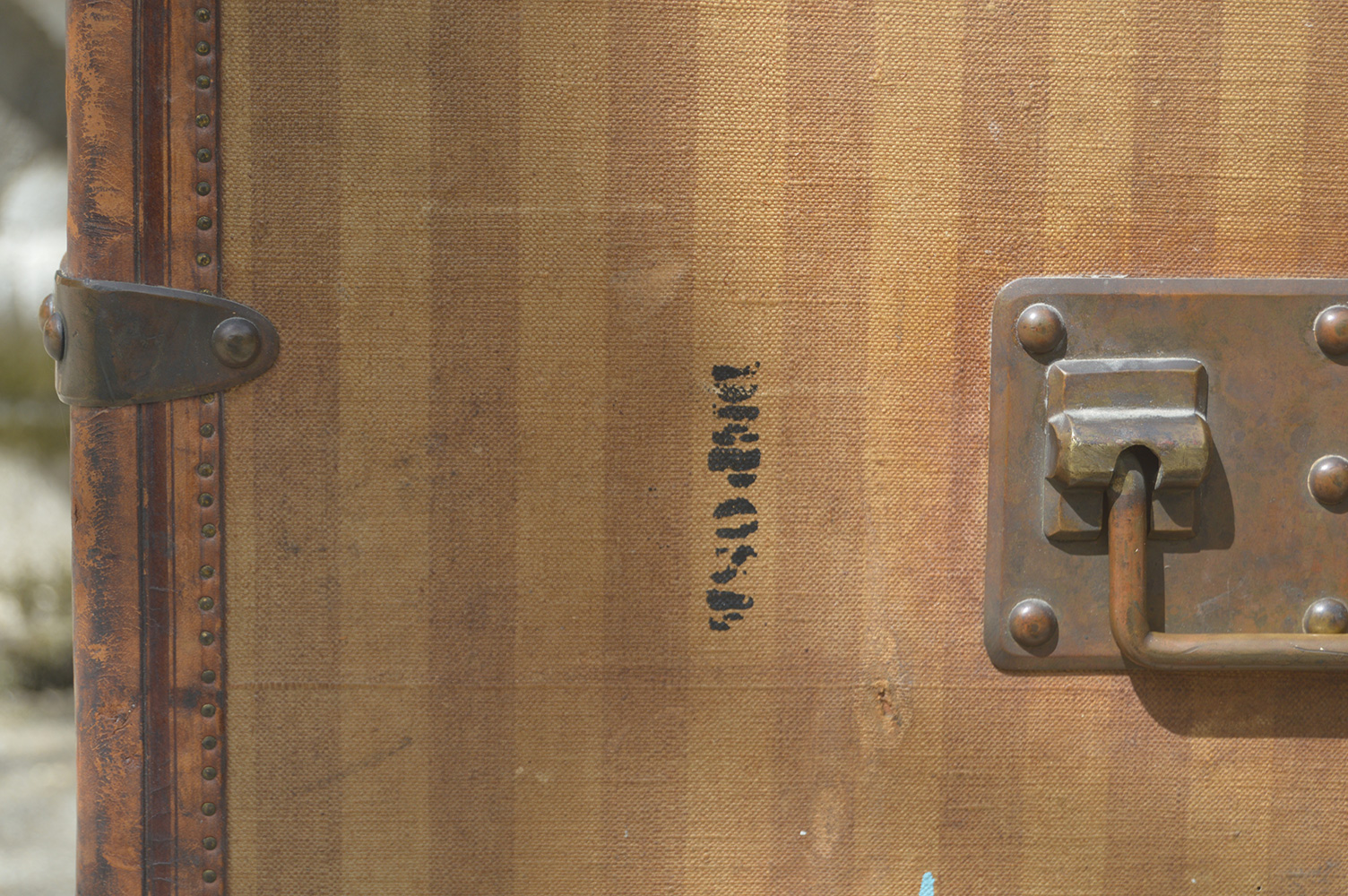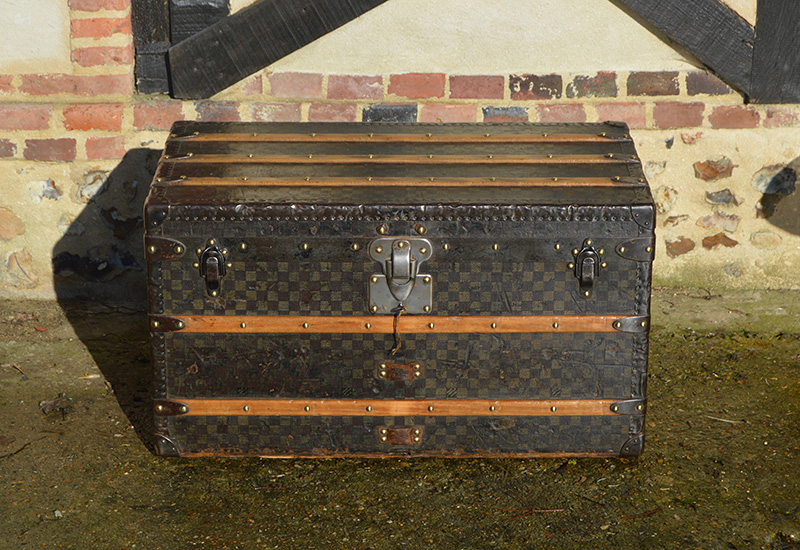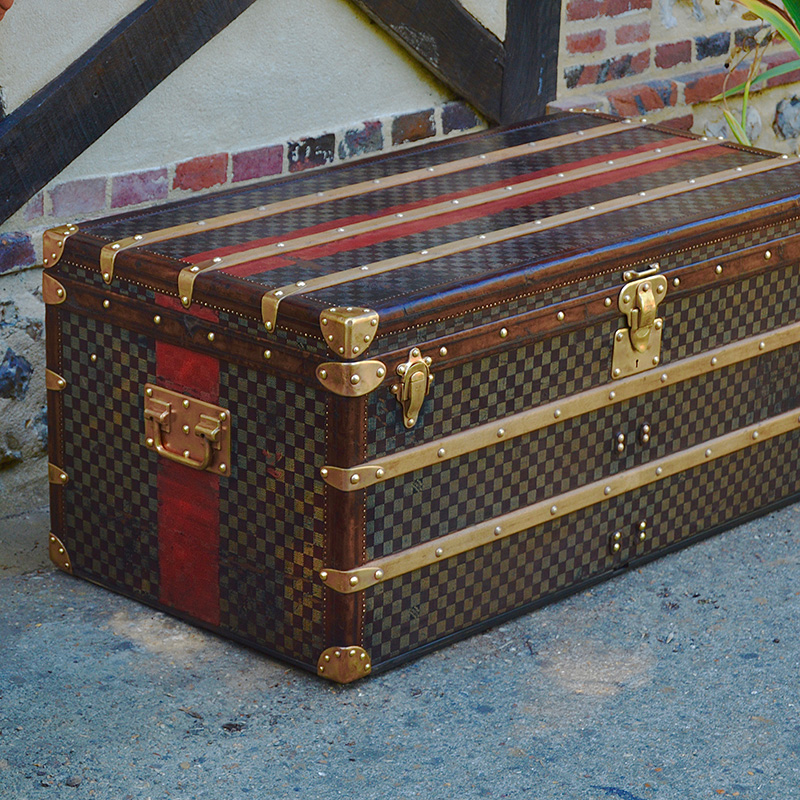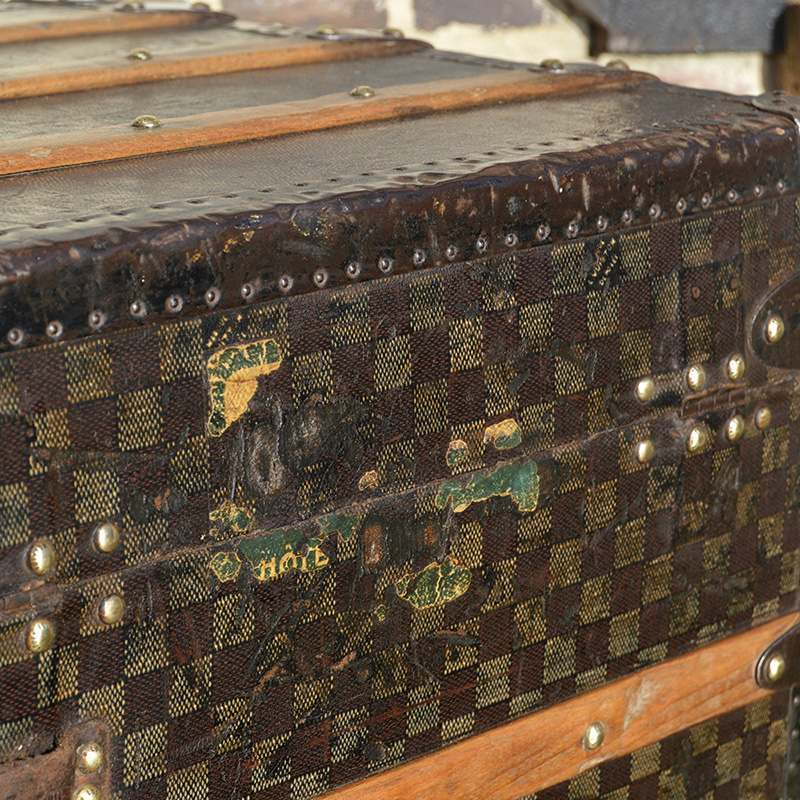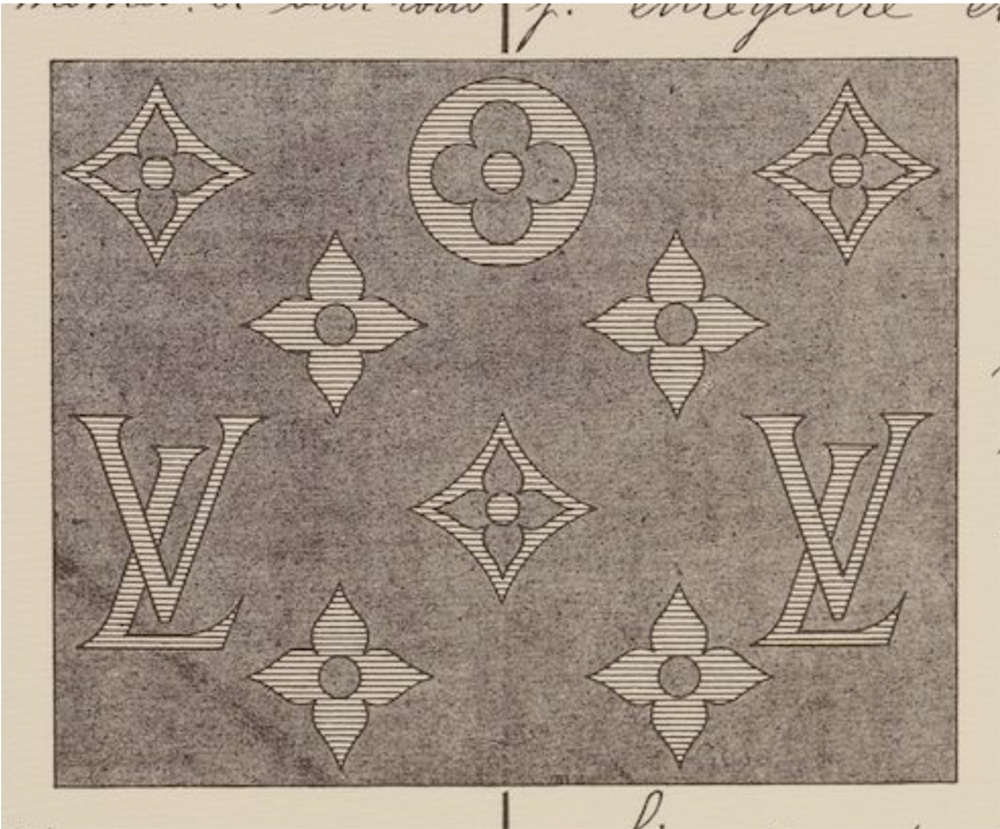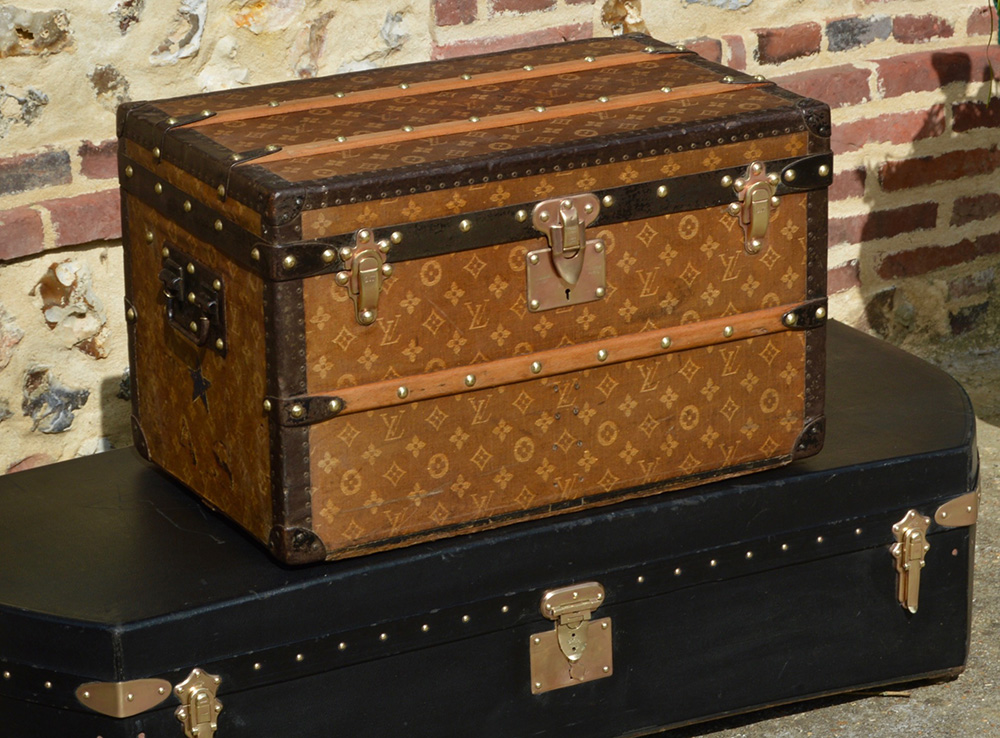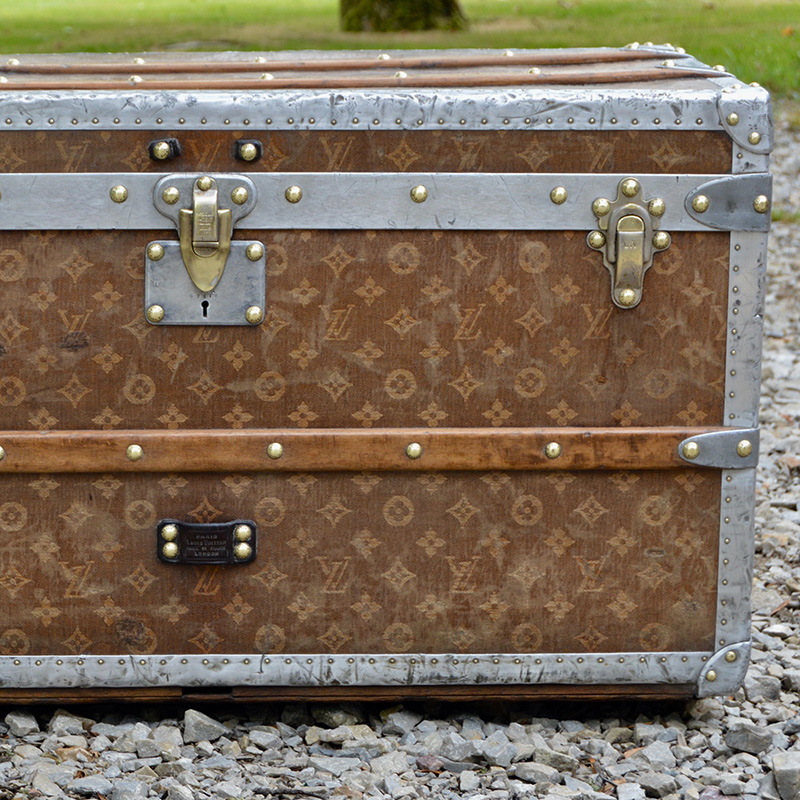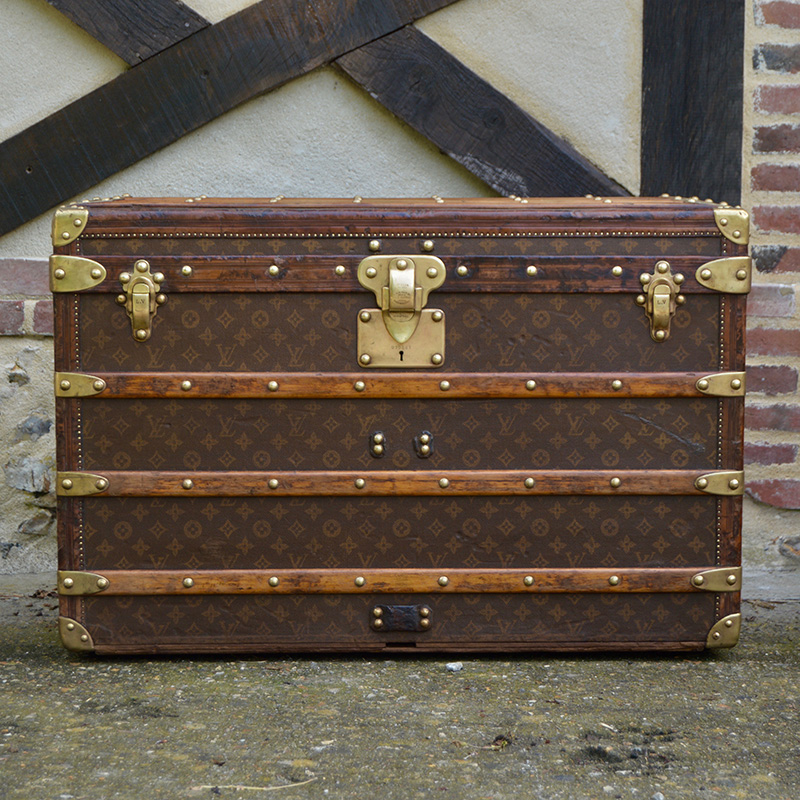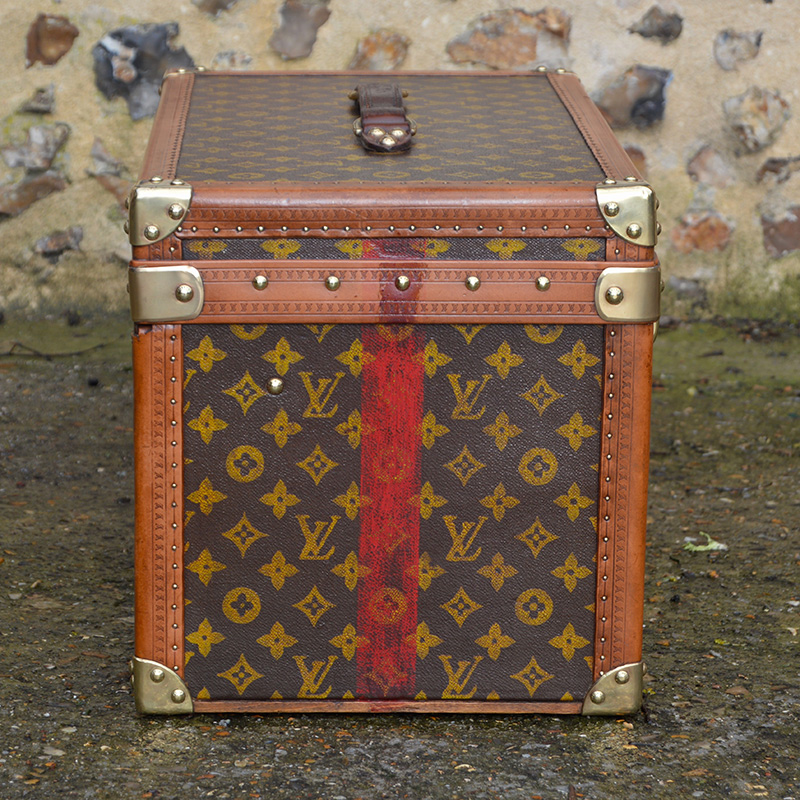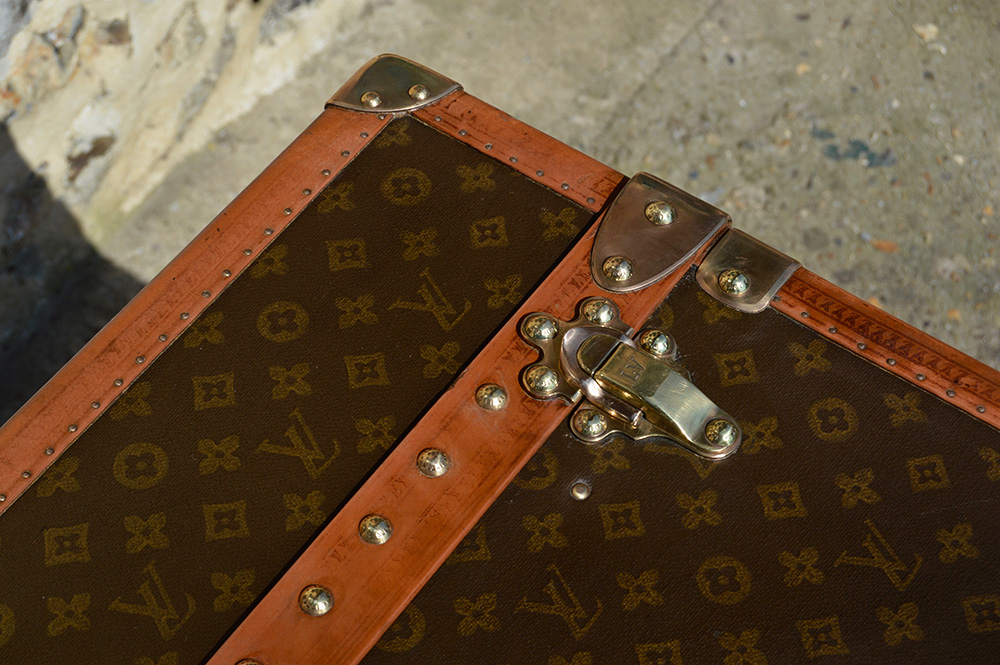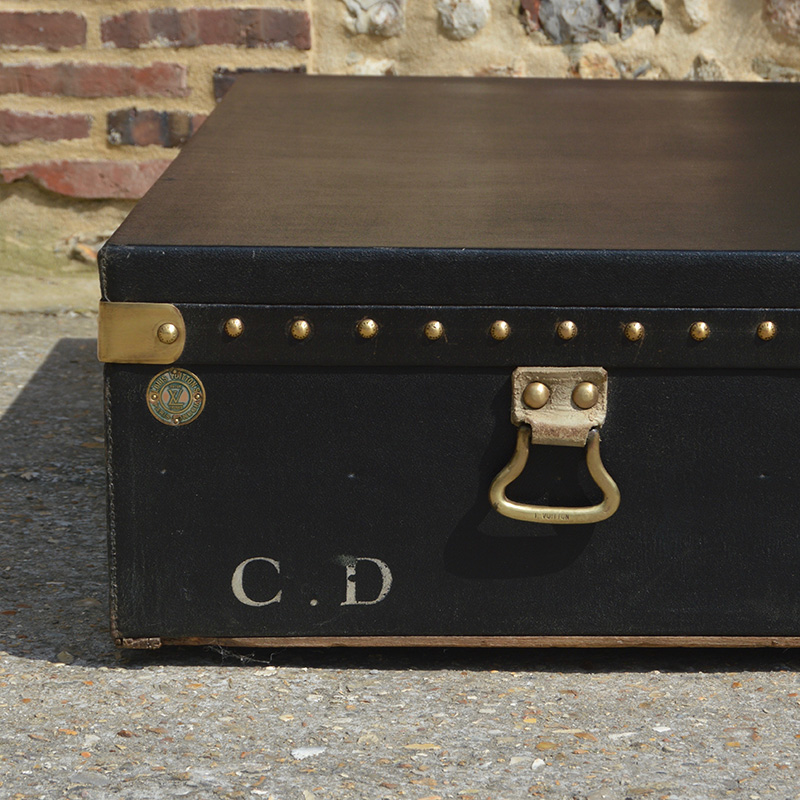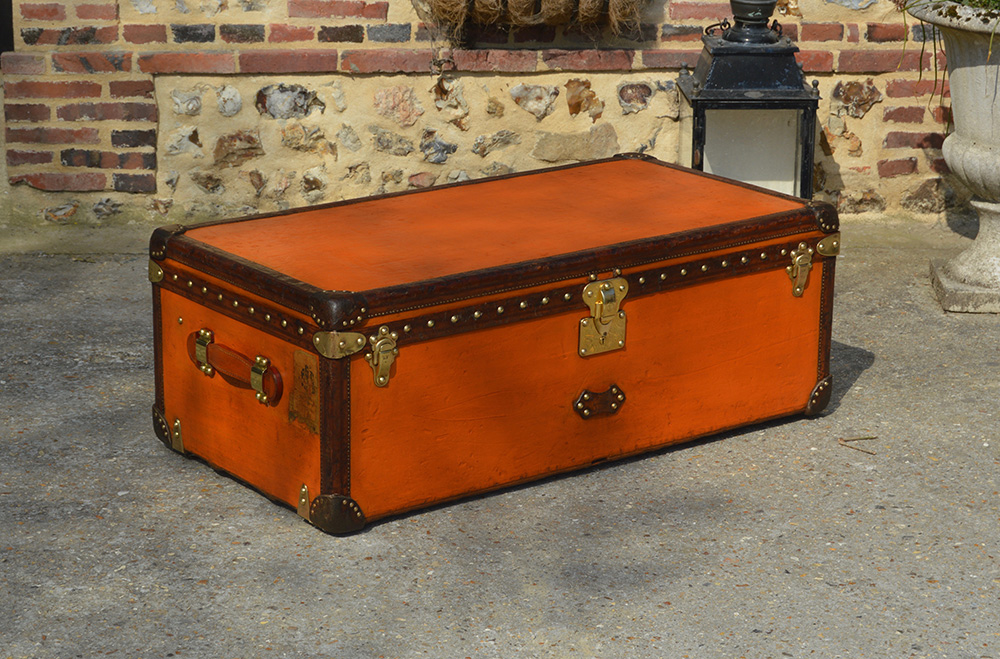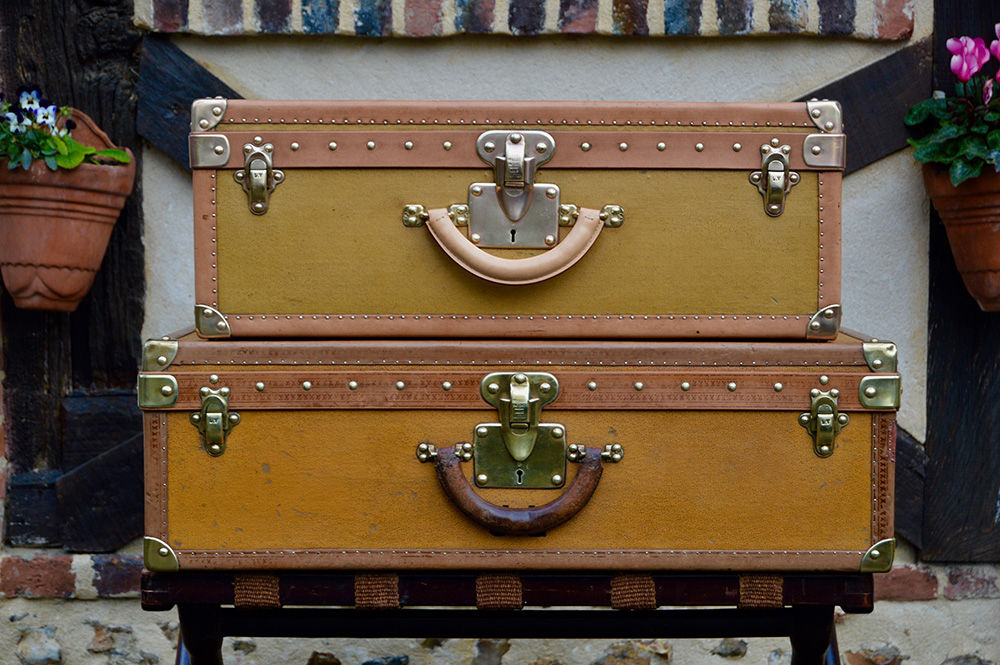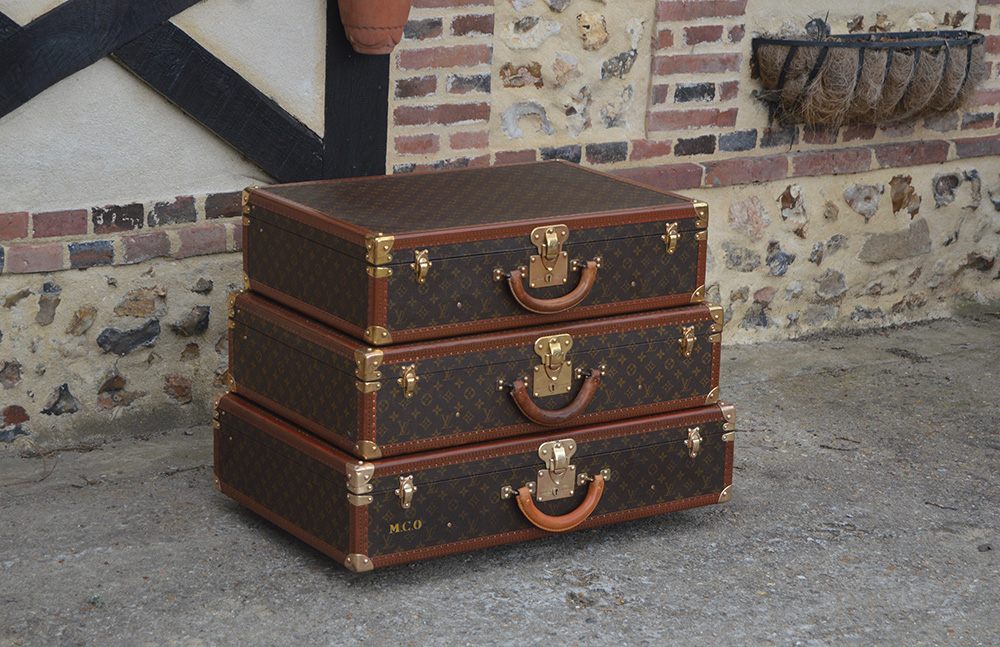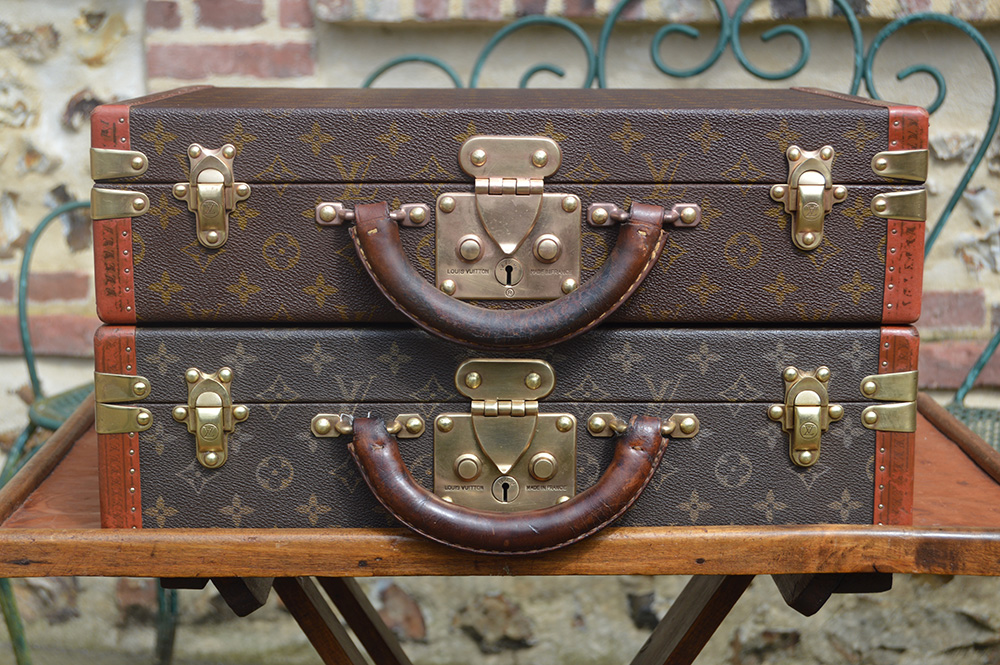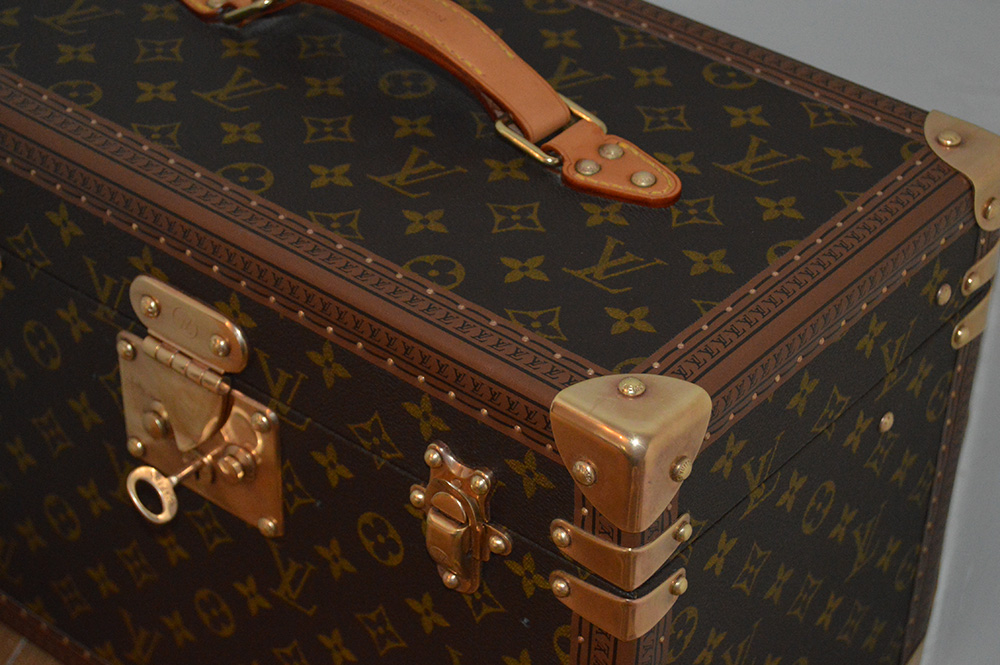We use cookies to make your experience better. To comply with the new e-Privacy directive, we need to ask for your consent to set the cookies. Learn more.
The different canvases
The Trianon canvas
From 1858 to 1872
Trianon canvas was the first canvas used by Louis-Vuitton. It was waterproof, very resistant and generally grey in colour. Proof of its robustness, the entire stock of the Asniere workshop was requisitioned during the Franco-Prussian war of 1870 for the creation of aeroplanes, the only means of communication between free and occupied France.
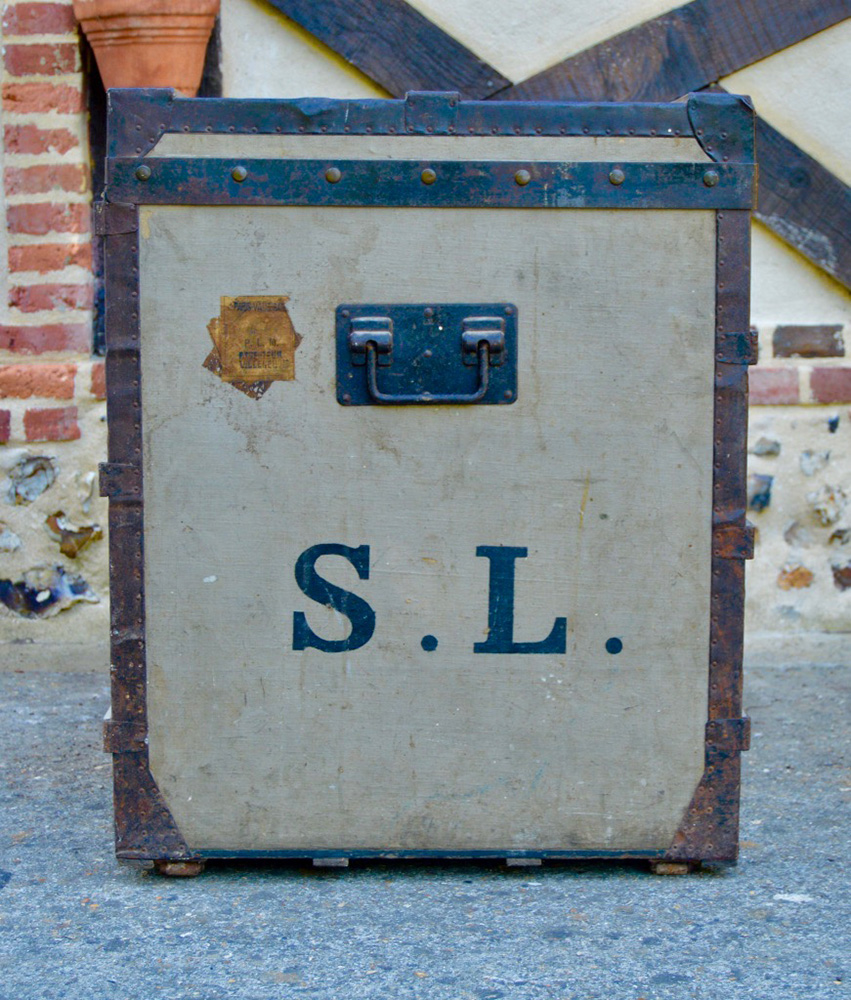
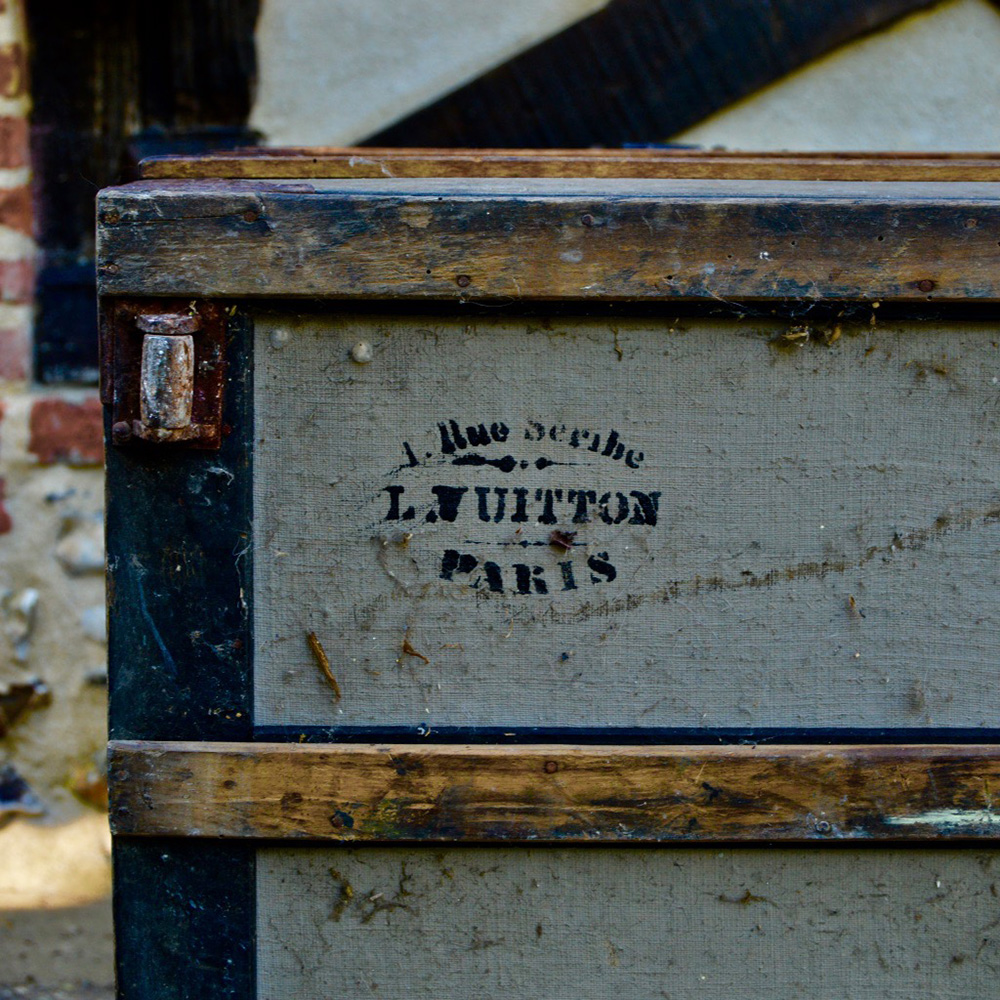
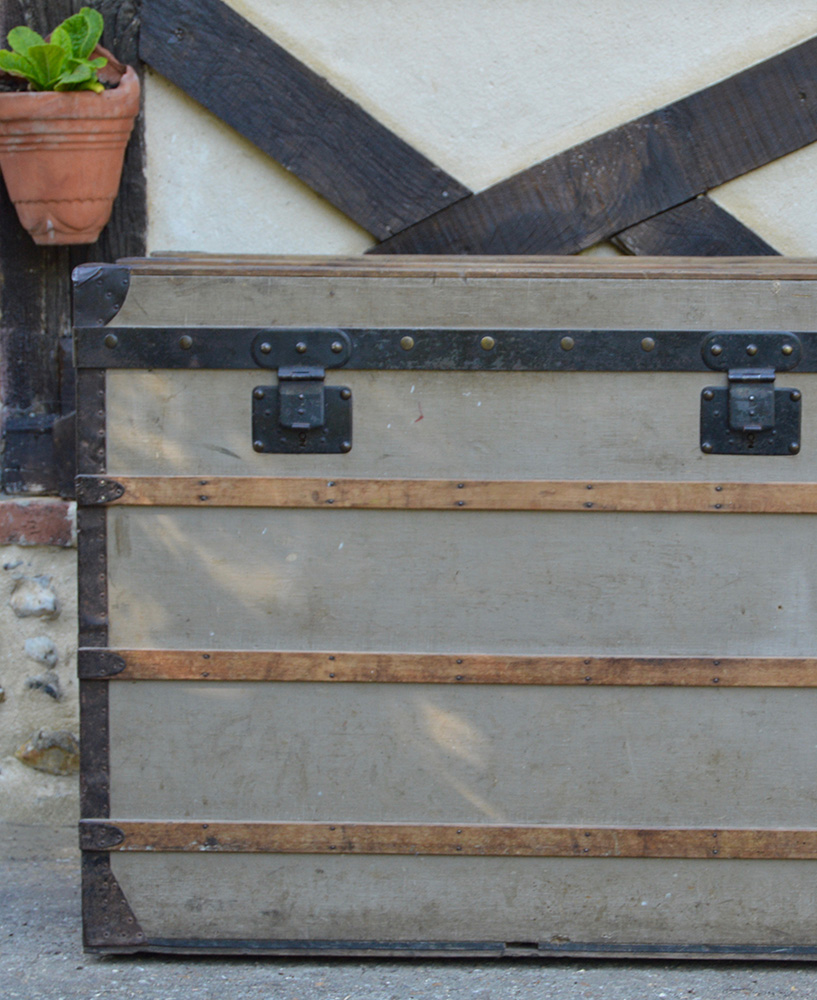
The red striped canvas
From 1872 to 1876
The red striped canvas was the first patterned canvas used by a trunk maker. Louis Vuitton developed this fabric to differentiate his new flat trunks from other trunk makers who, like him, also flattened the bonnets of their luggage.
The beige striped canvas
From 1876 to 1888
Louis Vuitton was already being copied extensively at this time by other trunk makers, who now also offered flat and striped trunks. In response, Louis Vuitton was the first trunk maker to patent a proprietary patterned canvas. This was very similar to the previous one, with a change from red to beige lines. From then on, two types of canvas were available, a light beige striped canvas and a dark beige striped canvas. The red striped fabric is still available as a special order. During the transitional period, some particularly rare models had a striped fabric and the word "deposited" in some of the stripes.
The last Louis Vuitton striped trunk was produced in 1928, for a customer who was very fond of striped patterns.
The Damier canvas
From 1888 to 1896
The striped pattern was copied extensively by other trunk makers despite the filing of a patent to protect it. It can be found in particular at Goyard and Moynat. Once again, Louis Vuitton created the Damier pattern to distinguish its products from those of other companies. As with the stripe, it comes in two shades, one light and one dark. The house's first coated canvas, it is also called "moleskin" canvas. Made on a linen structure, the canvas was "printed" with the pattern, then coated.
The woven Jacquard canvas
1896 à 1904
Louis Vuitton had already been dead for four years when his son George created the famous monogram pattern. Despite patents for the checkerboard pattern and numerous legal actions to protect it, the house was still copied extensively. So, in order to completely dissociate the other brands from their house, George and his son created a pattern that was inseparable from Louis Vuitton, with the designer's initials and various geometric shapes. These shapes were inspired by the tiles in the family kitchen at Asniere (which are said to still be in the home of one of the family's descendants).
The Louis Vuitton monogram appears for the first time in the form of a jacquard woven fabric. This very delicate fabric depicted very fine patterns and, once applied, was covered with a protective varnish, which has now often disappeared. However, in addition to being very complicated to apply during the manufacture of the trunks, the Jacquard fabric was glued with a glue based on rye flour, a foodstuff much appreciated by rodents which devoured the trunk lining in damp places.
The coated monogram canvas
From 1902 - to 1959
Woven cloth was particularly expensive, complicated to manufacture and rapidly deteriorating. This is why, in 1902, George Vuitton proposed the first coated monogram canvas, known as "Pegamoid". This manufacturing process consisted of using Pegamoid induction resins, applying the yellow pattern to an already coated cotton canvas.
During this period, Louis Vuitton offered many different canvases, with patterns in different colours (yellow, green, red or blue), monograms called "sombres" or canvases with yellow patterns called "pochoirs". All these canvases were very resistant and kept the same manufacture, with a base of coated cotton canvas.
Vuitonite canvas
Around 1900
There are also plain coloured cloths, called Vuitonite cloth. This coating was often used for car models because the colour could be changed to match the colour of the car. As cars of the time were mainly black, many car models were made of black Vuitonite.
This very strong fabric could be left outside and sewn directly onto the wooden trunk. The most common models were orange, originally created for Russian customers. Many Louis Vuitton trunks covered with orange vuittonite canvas have now turned yellow, due to excessive exposure to the sun. The trick to recognising the original lining of a trunk is to look at the inside edge, which is rarely exposed to the sun. Yellow, orange, green and red vuittonite cloths are the best known.
During the Second World War, a very solid grey canvas was also used for a short time by Gaston Louis (son of George), when he had to produce these trunks in "free" France under the Vichy regime. During this war, the workshops of Asniere were requisitioned by the Gestapo to make coffins with the wood used for the trunk. However, as the poplar planks were pre-cut in advance, it was impossible to meet the German demand.
The monogram coated PVC canvas
1959 - today
Louis Vuitton now uses a monogram canvas coated on a PVC film, with a transfer coating of plastic materials in a pasty state (polyvinyl chloride) on a woven textile support based on cotton and polyester fibre. This fabric is easier to produce, can be used for travel bags and is much more resistant.

